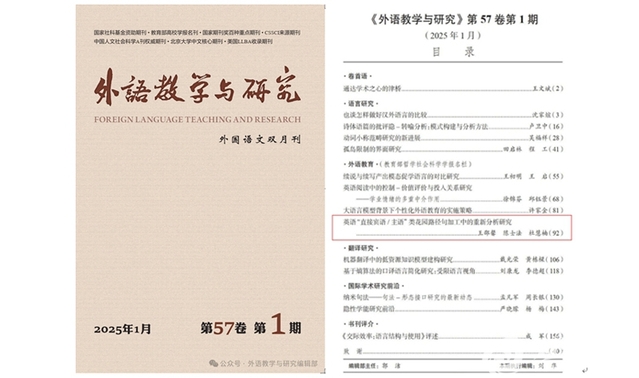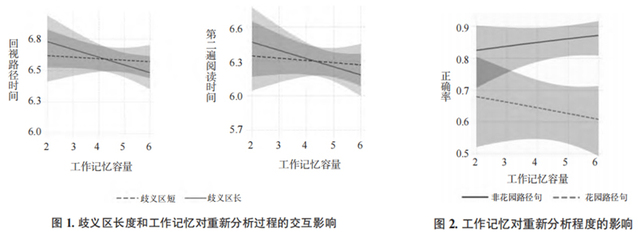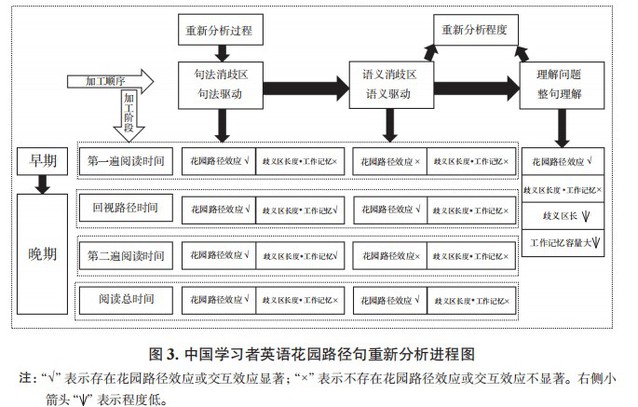Recently, Wang Shaoxin, a doctoral candidate from the School of Foreign Languages, published a study titled Reanalysis in English “Direct Object/Subject” Garden Path Sentence Processing” in the journal Foreign Language Teaching and Research. This research was collaboratively conducted by members of the Shandong Provincial Higher Education Humanities and Social Sciences Experimental Laboratory (Class A) - the Interdisciplinary Research Laboratory of Second Language Acquisition.
The garden path phenomenon is a specific type of local ambiguity encountered during language processing. Reanalysis in the processing of garden path sentences refers to the process by which language analysis mechanisms correct an initial analysis that is incompatible with subsequent syntactic representations. Using eye-tracking technology and comprehension questions regarding garden path structures, this study investigated reanalysis during the processing of English “direct object/subject” garden path sentences by Chinese learners of English, and further constructed a reanalysis process schema for these learners. The findings revealed that, in the early and late eye movement indicators during syntactic disambiguation, participants experienced the garden path effect and engaged in reanalysis. However, the analysis of late eye movement indicators during semantic disambiguation suggested that reanalysis is never fully completed and resolved for many sentences. The interaction effect between ambiguity length and working memory was significant in the late eye movement indicators of syntactic disambiguation (Figure 1). Participants with greater working memory capacity took less time to read longer garden path sentences, indicating that both factors interactively influence the reanalysis process. Furthermore, the analysis of accuracy indicated that there were significant interaction effects between sentence type, ambiguity length, and working memory (Figure 2). Participants showed lower accuracy in understanding longer garden path sentences, and those with higher working memory capacity also demonstrated lower accuracy in comprehending garden path sentences, suggesting that both factors affect the extent of reanalysis.
Based on the research findings, the researchers presented a schema showing the time course of the reanalysis in Chinese L2 learners’ English garden path sentence comprehension (Figure 3). This diagram illustrated that Chinese learners initiate the reanalysis process from the syntactic disambiguation region in the early stages; however, they are often unable to fully utilize syntactic and semantic disambiguation cues to reanalyze disambiguated syntactic structures completely. It also revealed that the length of the ambiguous region and working memory interactively influence the reanalysis process, and both factors independently influence the degree of reanalysis.


